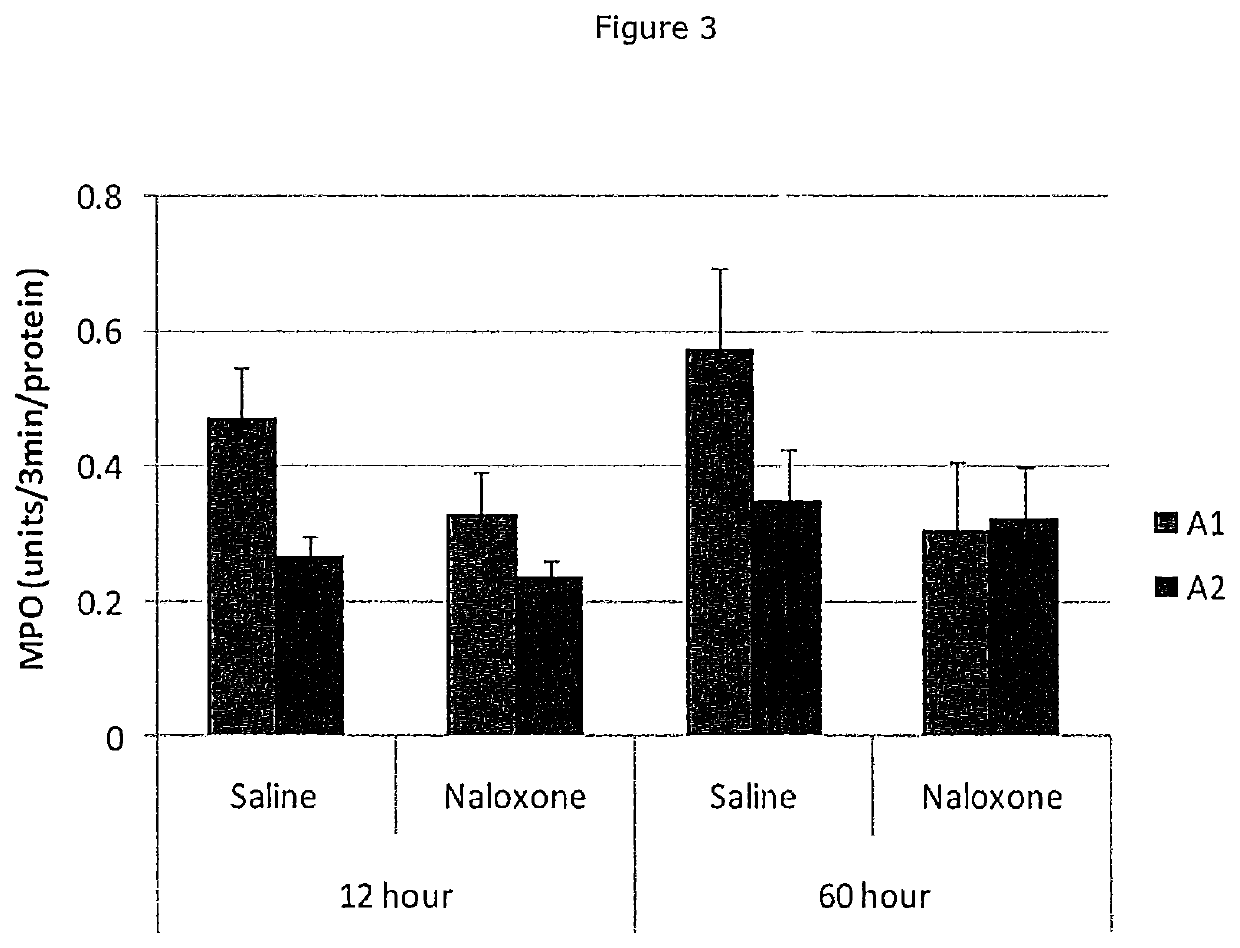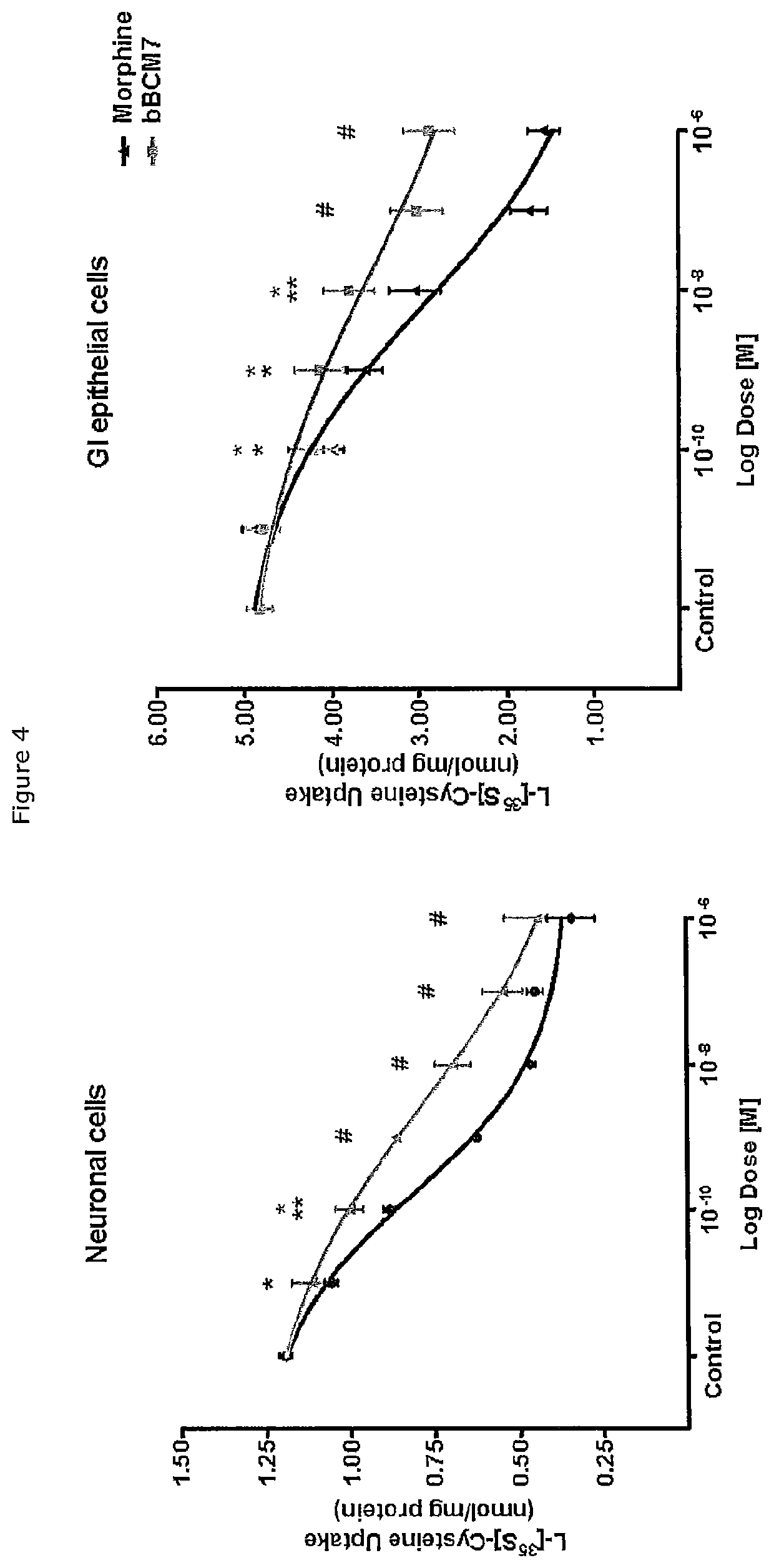Beta-casein a2 and reducing or preventing symptoms of lactose intolerance
a technology of betacasein and milk protein, which is applied in the direction of drug composition, peptide/protein ingredients, dispersed delivery, etc., can solve the problems of increased water into the bowel, increased lactose intolerance, and difficulty in avoiding milk or dairy products in diet, so as to prevent or reduce the symptoms of lactose intolerance
- Summary
- Abstract
- Description
- Claims
- Application Information
AI Technical Summary
Benefits of technology
Problems solved by technology
Method used
Image
Examples
example 1
Feeding Methodology
[0062]Seventy two weaned (four week old) male Wistar rats were used. Following a 7-day acclimatisation period on a control diet, the rats were fed for either 12 or 60 hours with one of three diets: 100% A1 diet, 100% A2 diet, control diet (n=6 per treatment). The protein component of the diets were derived from skim milk (for the A1 and A2 diets) and on egg white (for the non-milk protein control diet), and were balanced for energy and macronutrient composition (see Table 1). Fifteen minutes before the end of the time period, rats received either naloxone or saline (control) via intra-peritoneal injection, and were then orally gavaged with a non-digestible tracer, titanium dioxide. Faecal and urine samples were collected at 7 time points over the following 24 hours, and stored at −20° C. (faecal) or −80° C. (urine) until they were analysed.
TABLE 1Composition of dietsProductA1 milk dietA2 milk dietControl dietIngredientgmkcalgmkcalgmkcalCasein000000A1 milk powder47...
example 2
Gastrointestinal Transit Time
[0063]Gastrointestinal transit time (GITT) was measured in rats fed according to Example 1. Titanium dioxide (TiO2) was used as a tracer administered orally to animals following 12 hour of feeding the 100% A1 diet, the 100% A2 diet, or the control diet. The results are shown in Table 2 and in FIG. 1. Recovery data is represented as the % TiO2 recovery versus time (hours). Rats fed the A1 diet showed delayed transit relative to rats fed the A2 diet, with both groups showing delay relative to rats fed the control diet.
TABLE 2GT Transit TimesTimeControlSDA1SDA2SD10.0010.0020.1710.4060.0010.00220.0060.0110.5141.2180.0110.02430.0280.0470.5221.2210.0330.04340.0290.0461.1892.8540.0560.03650.0640.0715.62413.7132.0484.16260.7581.19610.34317.41922.18819.698737.60528.54953.53015.51361.02411.983841.71628.08255.29618.08462.48213.170
example 3
Lactase Activity
[0064]Frozen powdered duodenum tissue samples were homogenised in ice-cold deionised water (1:5 wt / vol), then centrifuged at 2,200 g for 30 minutes at 4. The supernatant was harvested and further diluted (1:25) with deionised water. The samples were incubated with lactose and the liberated glucose determined using a glucose-oxidase kit (Sigma) and measured with a microplate reader. Table 3 and FIG. 2 show the results for duodenal lactase for both acute (12 hour) and chronic (60 hour) fed groups of rats. Duodenal lactase activity was elevated in acute fed A2 groups, relative to chronic fed A2 groups and to both acute and chronic fed A1 groups.
TABLE 3Lactase activity for acute and chronic fed groupsDuodenum lactase(fkatal / ug protein)Std DevA1 128.943.87A1 607.352.19A1 12 N8.993.86A1 60 N8.422.59A2 1235.9732.23A2 608.451.92A2 12 N6.552.76A2 60 Nno datano data
PUM
| Property | Measurement | Unit |
|---|---|---|
| time | aaaaa | aaaaa |
| time | aaaaa | aaaaa |
| time | aaaaa | aaaaa |
Abstract
Description
Claims
Application Information
 Login to View More
Login to View More - R&D
- Intellectual Property
- Life Sciences
- Materials
- Tech Scout
- Unparalleled Data Quality
- Higher Quality Content
- 60% Fewer Hallucinations
Browse by: Latest US Patents, China's latest patents, Technical Efficacy Thesaurus, Application Domain, Technology Topic, Popular Technical Reports.
© 2025 PatSnap. All rights reserved.Legal|Privacy policy|Modern Slavery Act Transparency Statement|Sitemap|About US| Contact US: help@patsnap.com



